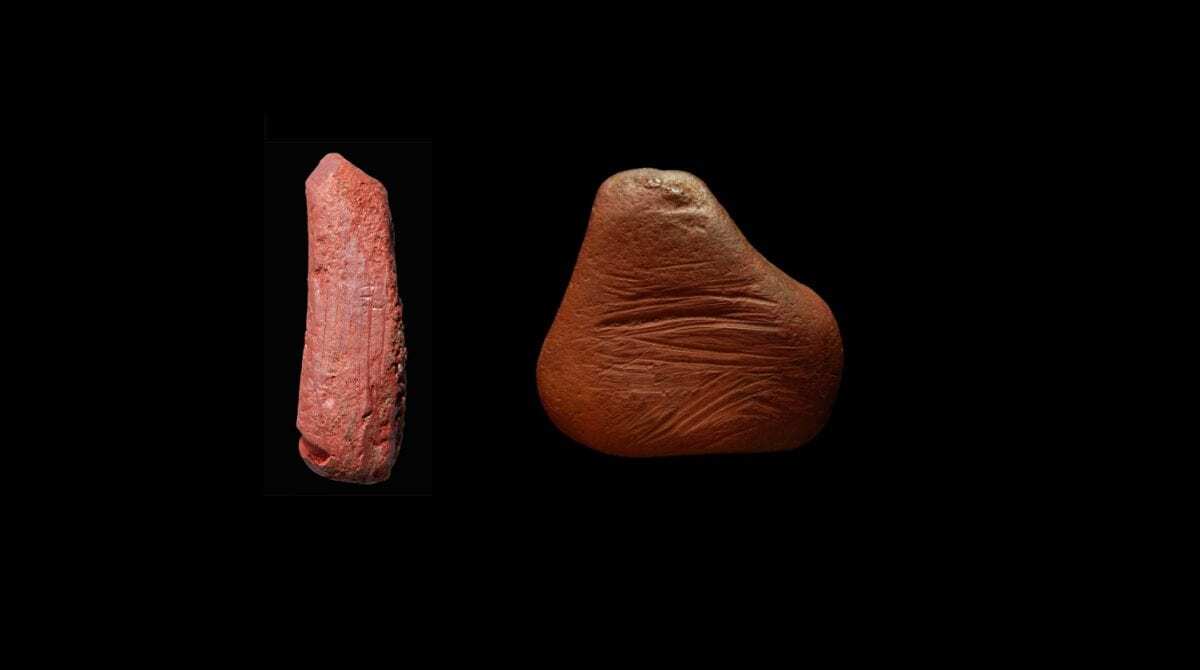One of the earliest known examples of a ‘crayon’ used by our our ancestors from approximately 10,000 years ago has been unearthed by archaeologists near prehistoric lake covered in peat.
The discovery was made at Seamer Carr and Flixton School House located near Scarborough, England, also nearby to Star Carr, one of the most famous Mesolithic discoveries in Europe.
Ochre is a mineral pigment that has been found in prehistoric hunter-gatherer societies across the globe. It was generally used to paint animal skins, apply colour or to adorn artwork.
Adjacent to the lake, an ochre pebble was also discovered with a heavily striated surface that suggests it was scraped to produce red pigment powder.
Lead author, Dr Andy Needham from the University of York’s Department of Archaeology said: “Colour was a very significant part of hunter-gatherer life and ochre gives you a very vibrant red colour. It is very important in the Mesolithic period and seems to be used in a number of ways.
“One of the latest objects we have found looks exactly like a crayon; the tip is faceted and has gone from a rounded end to a really sharpened end, suggesting it has been used.
“For me it is a very significant object and helps us build a bigger picture of what life was like in the area; it suggests it would have been a very colourful place.”
“The pebble and crayon were located in an area already rich in art. It is possible there could have been an artistic use for these objects, perhaps for colouring animal skins or for use in decorative artwork,” Dr Needham added.
Header Image: The crayon & pebble. Image Credit: Paul Shields/University of York







